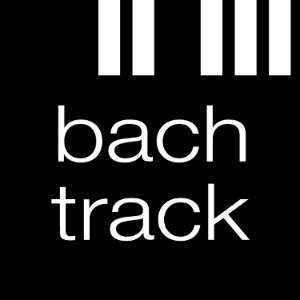After months of streaming and enjoying the best musical offerings from around the world, most of us can’t wait to return to our local concert halls, to feel the emotions that come with live performances and to show our appreciation for the artists. Lugano takes pride in its cultural heritage and looks back on a wealthy musical history, from concerts at the Castello di Trevano, known as the Château de la musique, and the Teatro Apollo in the 19th century to one of today’s most prestigious concert halls, LAC Lugano Arte e Cultura. With its new season, LuganoMusica hopes to give comfort and hope for a restart based on solidarity and sharing.
Unusual times call for extraordinary measures, and with the new season’s main focus, LuganoMusica has achieved just that. Instead of having an artist or composer-in-residence, Lugano invited an entire century “in residence”: Panorama Novecento. The 20th century was a century of remarkable creativity. Figures like Stravinsky and Debussy, Schoenberg and Webern, Shostakovich, Bartók and Pärt, Ives and Stockhausen have individually redesigned and pushed the boundaries of musical styles. This season allows the audience to experience this palette of forms and melodies, rhythms and timbres to approach a music that is too often considered difficult.
The heart of the focus is an exciting recital from Daniil Trifonov, a former Lugano artist-in-residence himself. Entitled “Decades”, the programme includes nine seminal works to demonstrate the rapid evolution of piano music in the 20th century. From Alban Berg’s restless First Piano Sonata to Stockhausen’s obsessive Klavierstück IX, the development unfolds in John Corigliano’s Beethovenian Fantasia on an Ostinato.
Julian Rachlin neatly pairs Shostakovich’s Violin Sonata (1968) with two Romantic masterpieces – Schumann’s Märchenbilder (for viola) and Brahms’ Third Violin Sonata – in a recital in January, while Paavo Järvi, known for celebrating his Nordic roots, fulfils the brief with Avo Pärt’ Trisagion (1992). It was composed for the congregation of the Orthodox Church of the Prophet Elijah in Ilomantsi, Finland, for its 500th anniversary, and although purely instrumental, it takes its inspiration from the opening prayer of the Orthodox Divine Liturgy. All lyrical parameters (number of syllables per word, accentuations, punctuation) are reflected in the composition, giving the listener the opportunity to fully apprehend the spirit of the text. Maria João Pires joins the Tonhalle Orchester Zürich for Chopin’s Piano Concerto no. 2 before Järvi steps even further back in history with one of Mozart’s late symphonies, No. 39.
The American JACK Quartet is dedicated to the performance of contemporary classical music, trying to “have an open mind, to be able to transform themselves for the benefit of any compositional ideas”. Join them in January for four of the finest and most adventurous string quartets of the 20th and 21st century by Julia Wolfe, Wolfgang Rihm, Francesca Verunelli and Heinz Holliger.
Stravinsky completed his neoclassical Symphony in C in 1940. “All notes gravitate toward a single note,” the composer remarked. “Thus this symphony will be neither a symphony in C major nor a symphony in C minor but simply a symphony in C.” The bustling finale of the work is apt for a programme which opens with the stormy overture from Don Giovanni, performed by Orchestra Mozart under the baton of Daniele Gatti. Their Easter Concert two days earlier is a belated celebration of Ludwig van Beethoven. The Italian orchestra isn’t the only ensemble marking the composer’s anniversary. The Deutsches Symphonie-Orchester Berlin, conducted by Robin Ticciati, visits Lugano with Isabelle Faust as the soloist in Beethoven’s Violin Concerto, and the Kammerorchester Basel brings the Third Piano Concerto (with Bertrand Chamayou as soloist) to the stage; Giovanni Antonini conducts.
One of the early highlights of the season is a guest performance by the Mariinsky Theatre Orchestra and Valery Gergiev. The programme consists of Scriabin’s Piano Concerto, Ravel’s Pavane pour une infante défunte and Mendelssohn’s Italian Symphony. Philippe Jordan and the Royal Concertgebouw Orchestra chose Richard Strauss as the main composer for their concert in March, preceded by a Romantic jewel: Brahms’ Violin Concerto performed by Janine Jansen.
Riccardo Muti and his Orchestre Giovanile Luigi Cherubini shine a light on the giovane scuola (young school), a group of (mainly operatic) Italian composers flourishing in the late 19th and early 20th century. Muti will paint symphonic colours with intermezzi from Cavalleria rusticana, Pagliacci, Manon Lescaut and Giordano’s Fedora as well as Alfredo Catalani’s Contemplazione. Joined by Maurizio Pollini playing Mozart’s Piano Concerto no. 27, it will be a memorable evening.
The 20th century is praised for its originality, but you can argue that the Baroque era was even more inventive. It saw the birth of opera, Italian concertos, the height of German counterpoint and new instruments and harmonies. The music of Monteverdi, Scarlatti, Bach and Handel conquered all European courts. LuganoMusica retraces over a century of Baroque music with the help of some of the finest international ensembles and soloists. Fabio Bondi and his ensemble Europa Galante paved the way for an entire generation of Italian Baroque players and invite the Lugano audience to discover the music of Paolo Nardini and Arcangelo Corelli, paired with concertos by Telemann, Handel and Vivaldi.
Vivaldi’s Stabat Mater, written in 1711, is probably one of his earliest religious works and is in safe hands (or rather voice) with Andreas Scholl who visits Lugano with La Cetra Baroque Orchestra in April. The German countertenor will, without doubt, perform both the dramatic and sensitive passages of the work equally gracefully. The concert also includes arias from Handel’s Giulio Cesare and Flavio and Vivaldi’s Introduzione al Miserere and Cessate, omai cessate, apt for an ensemble named after a work of the Venetian composer. If you prefer instrumental Baroque music, Kit Armstrong presents a colourful programme of Bach chorales, framed by works of probably the greatest composers of their times: the Elizabethan composer William Byrd and Wolfgang Amadeus Mozart. A wide-ranging recital for a wide-ranging season.
Click here to view the full season listings.
This article was sponsored by Fondazione LuganoMusica




